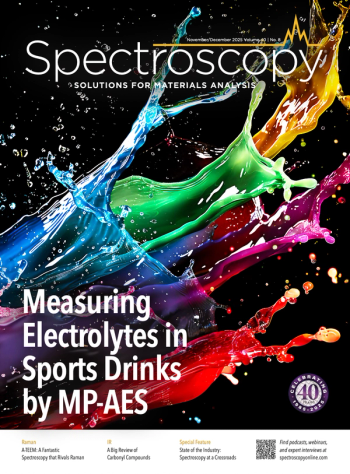
Study Results in the Discovery of Anisotropic Friction in Ligand–Protein Systems
A new atomic force microscopy (AFM)-based method allows the study of unbinding a ligand from a protein bound to a surface not only along a single coordinate, but along all three Cartesian coordinates (1).
In a recent discovery, researchers from the University of Freiburg and the Max Planck Institute of Biophysics in Frankfurt discovered a novel direction-dependent friction in proteins called anisotropic friction (1). In their single molecule experiments, the team used a new method applying stereographic single molecule force spectroscopy, which is based on atomic force microscopy (AFM) (1). Using this technique aided them in their study because it enabled them to study the unbinding of a ligand from a protein bound to a surface not only along a single coordinate, but along all three Cartesian coordinates (1).
This experiment required using computer simulations. Miriam Jäger and Dr. Steffen Wolf of the University of Freiburg’s Institute of Physics took the lead on this, recreating the experiment using computer simulations (1). During the simulations, they determined that the work of detaching a ligand from its binding site depends on the exact direction of application of the pulling force (1).
“Until now, nobody had observed that friction in biomolecules was dependent on direction,” says physicist Dr. Steffen Wolf of the University of Freiburg (1).
Proteins are the microscopic machinery of cells, performing work during their functional cycles (1). Accordingly, proteins lose energy during their functional cycle because of dissipation (1). From a macroscopic perspective, the latter effect corresponds to apparent friction. The researchers discovered the novel type of friction by carrying out single molecule experiments and simulations on a model complex of a protein and a ligand (1).
The source of the angle-dependent friction is the undefinable and random orientation of the proteins along their rotational axes bound to the surface in the experiment (1). The team repeated the single molecule pulling experiments by both binding and unbinding a ligand to and from a protein several times to achieve statistically significant results. Consequently, in each measurement, a ligand was pulled at the same angle with respect to the surface, but over different regions of the randomly oriented protein. Therefore, each time different amounts of energy were deposited into the biomolecule. The corresponding effect is a source of friction, which the researchers call anisotropic friction.
“We assume that this previously unknown and fundamental type of friction is present in every bioassembly in which randomness in protein orientation appears together with directionality of force application,” says Dr. Bizan N. Balzer, a biophysicist (1). Balzer explains that this is the case in biomolecular motors or force-sensitive membrane proteins, as well as for processes such as blood flow, where forces are exerted on randomly oriented proteins (1).
Balzer concludes, “Anisotropic friction is thus another important piece of the puzzle for understanding friction in both technical applications and in biological complexes in general" (1).
In summary, Scientists from the University of Freiburg and the Max Planck Institute of Biophysics in Frankfurt have discovered a novel type of friction in proteins called anisotropic friction, which increases with the pulling angle applied (1). The researchers believe this previously unknown type of friction is present in every bioassembly in which randomness in protein orientation appears together with directionality of force application, making it an important piece of the puzzle for understanding friction in both technical applications and biological complexes in general (1).
Reference
(1) Cai, W.; Jäger, M.; Bullerjahn, J. T.; Hugel, T.; Wolf, S.; Balzer, B. N. Anisotropic Friction in a Ligand-Protein Complex. Nano Lett. Article ASAP. DOI:
Newsletter
Get essential updates on the latest spectroscopy technologies, regulatory standards, and best practices—subscribe today to Spectroscopy.


